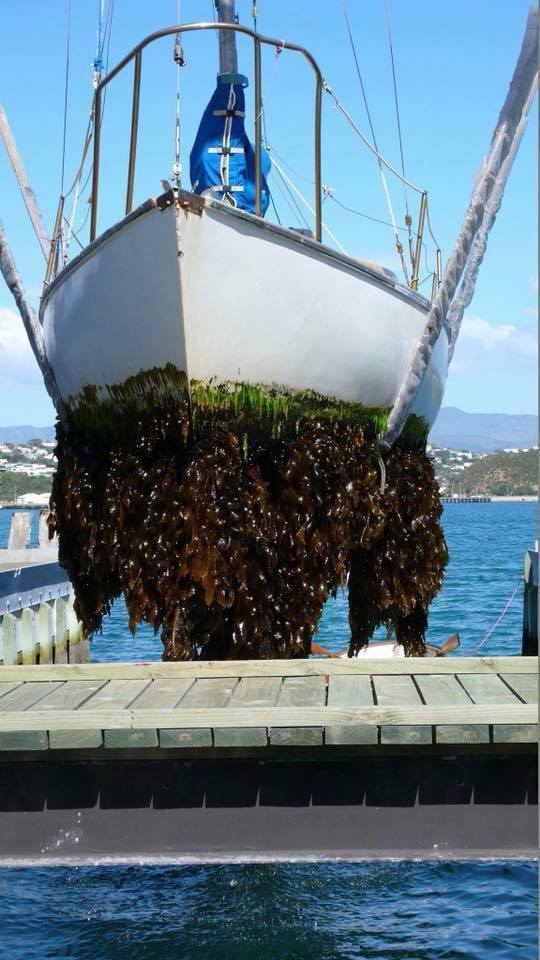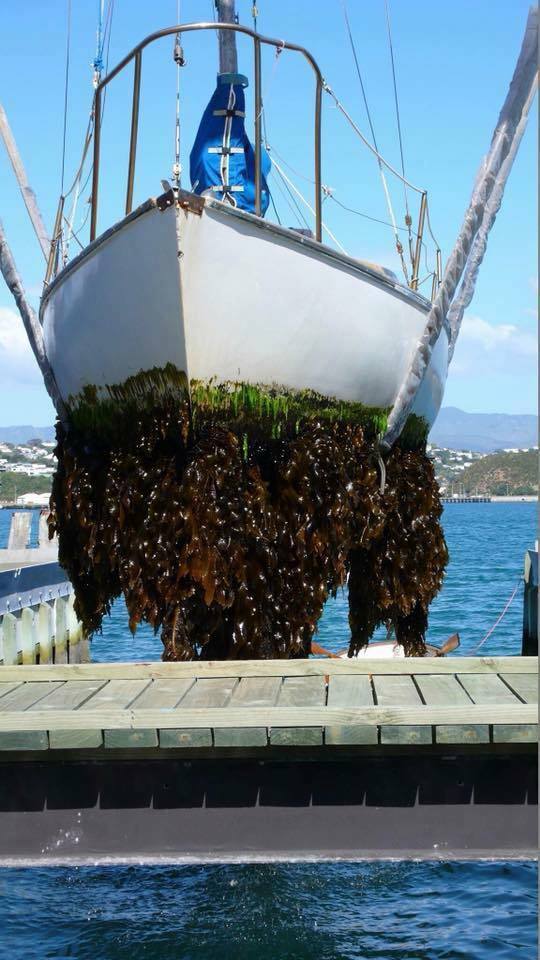
So what is the best anti-fouling paint for your boat? How do you choose from all those paints that are on the market? We have already seen that type of water, boat usage, and water temperature will have an effect on the type of anti-fouling paint that you will need. Let’s take a look at some other issues …
One of your biggest concerns will be your budget. Aside from the cost of getting the work done, or buying the tools to do it yourself (as well as paying for yard time), you must look at the price of anti-fouling paint. Pettit Paint’s Trinidad SR, recommended for high fouling areas, starts at $69.99 a quart. Interlux’s Micron 66, also for high fouling areas, runs $329 per gallon, and that is not the most expensive anti-fouling paint on the market.
Why is the paint so expensive? One reason is that in February of 2006, the price for copper (the metal used in most anti-fouling paint), hit an all time high. No one knows exactly what will happen to the copper market as demand decreases in some industries and rises in others.
Legal restrictions where you live will also affect your choice of paint. Some companies, such as Interlux, no longer make paints containing TBT; you will need to find an alternative if you live in a high fouling area that has banned TBT. Sea Hawk maintains that their tin-free Biocop TF “protects hulls in the harshest fouling conditions.” Their testing indicates that this new product outperforms old tin-based paints. Biocop TF even comes with a 12-month written guarantee.
Despite their toxicity to marine life, tin-based anti-fouling paints are still legally available for pleasure craft in some parts of the Caribbean. For example, Budget Marine’s stores on Grenada, Trinidad and Tobago, St. Maarten, Curacao and Bonaire, list Sea Hawk’s Islands 44 at around $225 per gallon. However, there may be a catch. Some experts believe that at some point pleasure craft will have their anti-fouling paint checked for TBT before they will be allowed into waters whose countries have banned that substance.
Upcoming legal restrictions are something to keep an eye on, too. Studies regarding the effect of copper on the marine environment are ongoing, and USEPA may reduce the amount of dissolved copper allowed in marine waters. Sweden has already taken steps to ban copper-based anti-fouling paint on pleasure craft on their east coast, and both Sweden and Denmark have restrictions based on leach rates and vessel size for their west coast.
Nontoxic anti-fouling paints are on the market and continue to be developed and tested; the US Navy is even involved in the testing. Though nontoxic paints cost more than the traditional metal-base anti-fouling paints, and the preparation time of the boat bottom can be more onerous, the longevity of these paints may, according to a Sea Grant study, “create cost savings to balance the extra stripping, application and hull cleaning costs.”
And if all of this isn’t enough to think about, completely different formulas are recommended for aluminum-hulled boats, out drives and props, and dinghies. So what is a boat owner to do? Consult the experts!
Various paint manufacturers have online systems that will help you choose the best anti-fouling paint for you boat, no matter where and how you use it. Check out the Paint System Advisor at Interlux (www.yachtpaint.com) and the Perfect Pick Selector System at Pettit Paint (www.pettitpaint.com). Using Sea Hawk’s online “Find a Boatyard” system at www.seahawkpaint.com, you can find paint as well as a certified applicator in your area.
Check with fellow boaters, talk to the experts at your local paint stores (and read the recommendations on the paint can labels), and find out what the guys at the local boatyard recommend. All these anti-fouling experts will help you choose a paint that is right for your boat, yet will do the least amount of damage to our “playground.”

